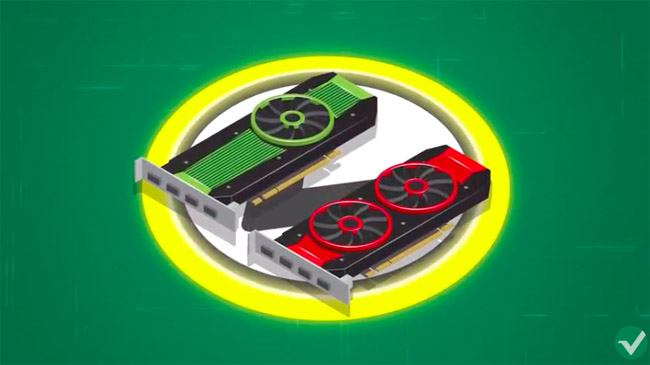Vertcoin is one of those cryptocurrencies that predates the FOMO and FUD, airdrops and ICOs that have come to characterize cryptocurrencies. In a very similar fashion to Bitcoin, Vertcoin was simply released as an open-source project on Github, and from there a community of volunteers and miners have ensured the longevity of this coin.
Vertcoin has a strong emphasis on fairness in mining, and that has kept it ASIC-resistant, even though it’s required two hard forks to fight off ASIC miners and botnets, and it may take another in the near future.
Vertcoin calls itself “The People’s Coin” in reference to its adherence to the ideals set out in the original Bitcoin whitepaper in regards to the voting power of individuals. That voting power for PoW cryptocurrencies is measured in hashrate, and sadly for Bitcoin and all the other PoW cryptocurrencies the growth of large mining pools has killed off the original ideal set out by Nakamoto of one CPU is equal to one vote.
Vertcoin Review: History
Vertcoin was launched in January 2014, and at that time it was trading for $0.07 per VTC.
Within a month the price of VTC surged 13,714% to a high of $10.14. The coin, of course, returned to earth, and by September was trading back at $0.07 for a loss of 99.27% from its high.
The summer of 2015 saw VTC price triple briefly before dropping back to the $0.07 level, where it remained until 2017, when it rallied late in that year along with the broader cryptocurrency markets.
The early promise of Vertcoin was so strong it was the subject of an article in the International Business Times all the way back in 2014, in which it was called a more ethical alternative to Bitcoin due to its fair mining policy.
Ironically that article was published on February 5, 2014 – the exact date that Vertcoin hit its $10.14 high and the drop back to $0.07 commenced.
Vertcoin Review: Algorithms and some Features
Vertcoin was created to use the Proof-of-Work consensus mechanism, and when it was launched it used the Scrypt Adaptive N algorithm. It was less than a year before the chain forked to use the Lyra2RE algorithm due to the rise of ASIC mining rigs.
It was also less than a year before the development team had to move off the Lyra2RE algorithm after finding a botnet controlling more than 50% of the blockchain. That move was to the Lyra2REv2 algorithm, and Vertcoin has remained with that algorithm since, although as of October 2018 it appears that ASIC mining could be coming to the Lyra2REv2 algorithm, which would necessitate another hard fork.
Besides the fair mining policy, Vertcoin has also made itself compatible with the Lightening Network, has implemented Segregated Witness, and is Stealth Address compatible. Currently, the Vertcoin development team is working on an upgrade that would allow for instant multi-coin transactions across blockchains.
Vertcoin Review: Fair Mining
As I’ve already pointed out, Vertcoin underwent two hard forks to avoid ASIC mining and could be facing another hard fork very soon due to two new developments.
The first is the development of an ASIC miner for the Lyra2REv2 in China. Rumors began emerging in September 2018 that an ASIC miner had been developed for Lyra2REv2 and those rumors have since been confirmed.
There hasn’t been a noticeable increase in network difficulty, perhaps because the new ASIC rigs are quite expensive, but over time ASIC mining is sure to increase.
The second development is the rise of Field Programmable Gate Array (FPGA) devices.
FPGA is to GPU mining what ASIC is to CPU mining, and the Lyra2REv2 algorithm would be fully exploitable by FPGA devices. This would also be able to push individual miners out of Vertcoin mining.
One final consideration the team has is to repel mining platforms such as NiceHash, which offer hashing power for sale, and could make it possible for someone to purchase enough hashing power to undertake a 51% attack.
The Vertcoin team has proposed a new algorithm, which they have named Verthash, and while they don’t have an ETA for the release of the algorithm, they are committed to finishing it as rapidly as possible, while still maintaining the security of the Vertcoin blockchain. The lead developers have stated that they will make the new Lyra2REv2 ASIC rigs the “most expensive paperweights ever purchased.”
While remaining ASIC-resistant certainly doesn’t guarantee success for Vertcoin, it does mean that the coin should maintain a small but dedicated community of miners to keep it alive.
The Vertcoin 1-Click Miner
The 1-Click miner for Vertcoin is quite possibly the easiest mining software you’ll ever encounter.
The 1-Click miner is available for download here on the Vertcoin website. You will need a wallet to tell the miner where to send your rewards, and a mining pool, and you also have to specify CPU mining or GPU mining. Beyond that there’s nothing else to do besides run the miner and collect Vertcoin.
Vertcoin Merged Mining
Merge mining is possible with Vertcoin, but currently the only coin that can be merge mined is Unitus. Who knows if more merged mining will become available in the future, but for now it is possible to mine more than one blockchain at a time.
The Vertcoin Team
The Vertcoin team has historically been a loose congregation of volunteer developers and it remains that way today. However, that will soon change somewhat as there will soon be a Vertcoin Foundation launched to take advantage of the tax-exempt status a foundation would confer, as well as a legal structure to allow for the creation of trademarks and copyrights.
The Vertcoin project has close ties to MIT, and many developers are undergraduate and graduate students there. The work being done on some projects that are expected to help Vertcoin are actually MIT projects, which gives Vertcoin some benefits in terms of free development.
The project has suffered somewhat in the past due to working on a volunteer developer basis, as some developers have left the project for better paying work. The creation of a foundation will allow Vertcoin to offer salaries to top developers, and thus hold onto talent while creating a more consistent development environment.
VTC Price History
I went over the price history of VTC above, but suffice it to say that the coin has never recovered to reach its $10.14 highs again, and as of October 2018 it is trading at just $0.687144, with a market cap of slightly less than $32 million, which is a far cry from the $424 million market cap it once sported.
If you’re interested in purchasing VTC the greatest volume is on CoinEgg, with modest volume also seen on Bittrex, Upbit and Poloniex. Those who wish to buy VTC with fiat currency can do so through Coinroom, with U.S. dollars, Euros, British Pounds, or Polish Zloty.
Storage of your VTC can be done in the Vertcoin Core wallet, and the Ledger Nano S also has support for storing VTC. If you prefer a mobile wallet, Coinomi will let you store VTC.
Vertcoin Review: Conclusion
In the 2014 International Business Times article there was a statement that said “Given its anti-ASIC mining construction and soaring value, Vertcoin could well be one of the few to make it out of a Reddit sub-forum and into the mainstream.”
Well, Vertcoin hasn’t really reached mainstream yet, but neither have any other cryptocurrencies, and Vertcoin remains in the running for becoming one of those coins to reach mainstream, especially with the dedicated development team continuing to improve the coin.
Vertcoin has hung on for nearly five years already, even in the face of 2017’s huge ICOs and airdrops, and the 2018 massive bear market in cryptocurrencies. The strong anti-ASIC and distributed mining commitment of the team have carried Vertcoin through everything, and will continue to provide a strong mining community that should be able to keep the coin alive.
That consistency could be what eventually allows Vertcoin to survive long enough to get to the mainstream while most other coins drift into the dusts of time.

